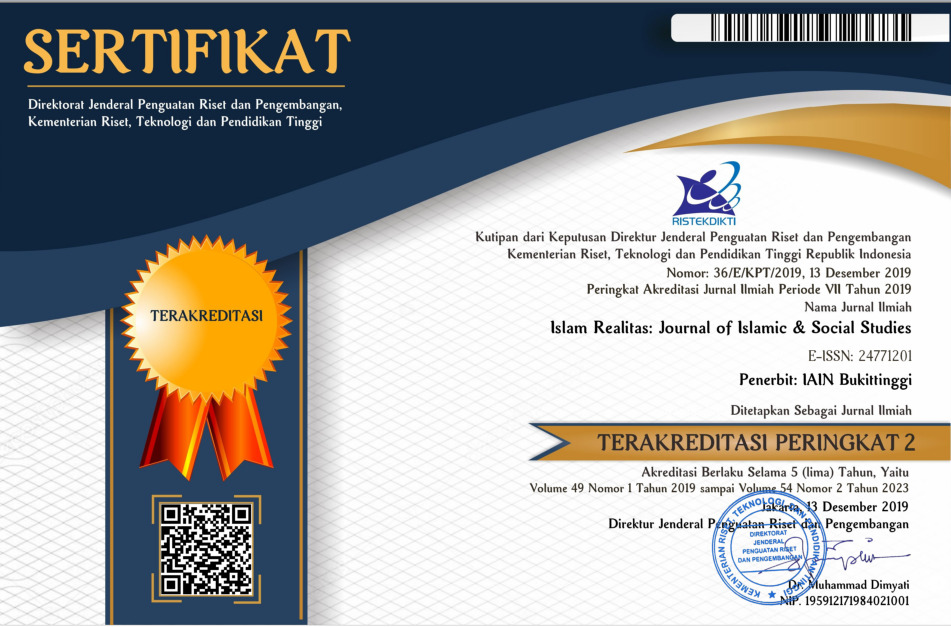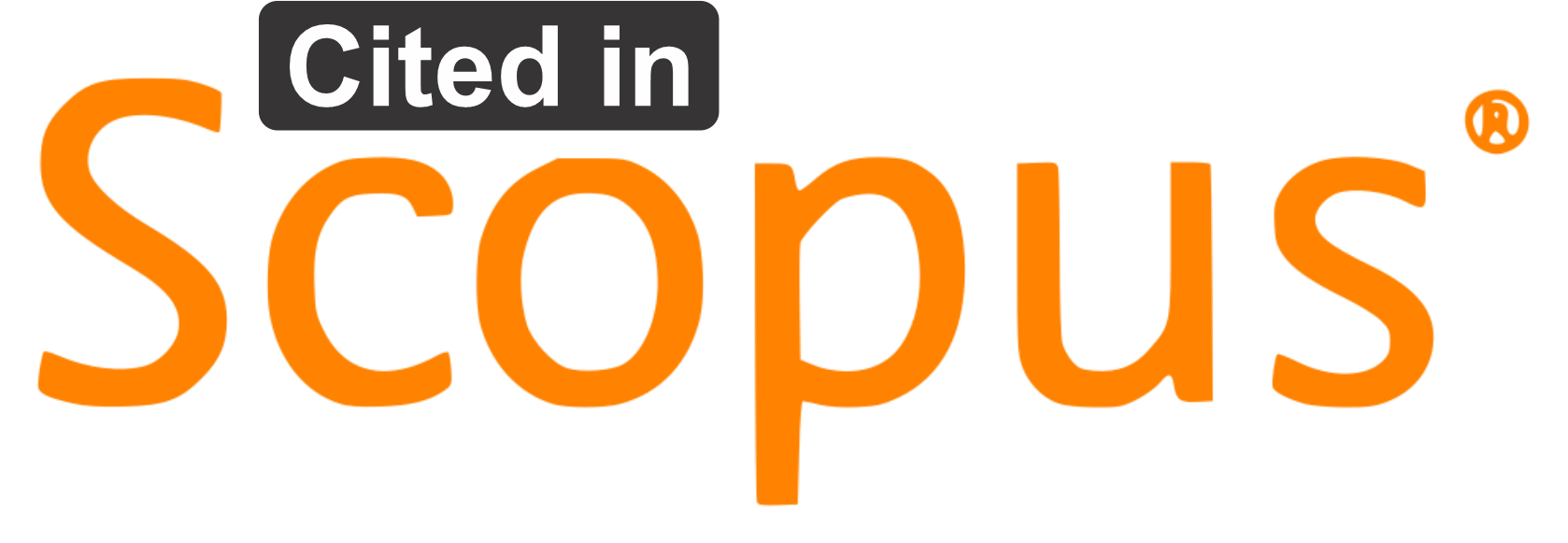Pro-Muslim Policies in Cambodia: Bureaucratizing Halal And Hijab in Muslim Minority Country
Downloads
This paper explores the dynamics of Pro-Muslim policies in the Kingdom of Cambodia, specifically related to halal institutionalization and the legalization of the hijab. Both are basic needs (dharuriyat) in Islamic Law, although the second is debatable. According to most early-period scholars (ulama klasik), these two policies could only be fulfilled in an Islamic state. Instead, the Cambodian Royal Government issued two policies in favour of Muslims practicing both needs. This research is qualitative research that uses an anthropological approach. Researchers collected data through observation, in-depth interviews, and documentation on policy documents, news, and articles that can be trusted. Interviews took place non-formally, face-to-face, and online via the internet. This paper argues that the pro-Muslim policies issued provide halal assurance for the consumption of the Muslims in the country (2% of the total population) and potentially improve the their socio-economy in the food and beverage industry and tourism. The legalization of the hijab guarantees that Muslim women can engage in public spaces freely without worrying about discrimination because of their identity and what they wear.
 Tulisan ini mengeksplorasi dinamika kebijakan Pro-Muslim di Negara Kerajaan Kamboja, secara spesifik terkait dengan kebijakan pelembagaan halal dan legalisasi hijab. Keduanya merupakan kebutuhan dasar (dharuriyat) dalam Hukum Islam, meskipun yang kedua masih diperdebatkan. Menurut mayoritas ulama periode awal, dua kebijakan ini hanya bisa terpenuhi di negara Islam. Sebaliknya, Pemerintah Kerajaan Kamboja,yang secara resmi menganut Buddhisme sebagai agama resmi negara, mengeluarkan dua kebijakan yang mendukung Muslim dengan mudah mengamalkan kedua kebutuhan tersebut. Penelitian ini adalah penelitian kualitatif yang menggunakan pendekatan antropologis. Peneliti mengumpulkan data-data melalui observasi, indepth-interview, dan dokumentasi terhadap dokumen kebijakan, berita, dan artikel yang bisa dipercaya. Interview berlangsung secara non-formal, melalui tatap muka dan online melalui internet. Tulisan ini berpendapat bahwa kebijakan pro-Muslim yang dikeluarkan memberikan jaminan kepastian halal untuk konsumsi 2.0 persen Muslim di negara tersebut, serta berpotensi meningkatkan perekonomian Muslim dalam industri makanan dan minuman, serta pariwisata. Legalisasi hijab memberikan jaminan kepada perempuan Muslim untuk mampu terlibat dalam ruang publik dengan bebas tanpa menghawatirkan diskriminasi karena identitas dan apa yang ia pakai.
Book
Al-Utsaimin, M. bin S. (2014). Halal Haram dalam Islam (I. Fauzi, Trans.; 1st ed.). Ummul Qura.
Bergeaud-Blackler, F., Lever, J., & Fischer, J. (Eds.). (2016). Halal Matters: Islam, Politics, and Markets in Global Perspective (First Edition). Routledge, Taylor & Francis Group.
Blengsli, B. A. (2009). Muslim Metamorphosis: Islamic Education and Politics in Contemporary Cambodia. In R. W. Hefner (Ed.), Making Modern Muslims: The Politics of Islamic Education in Southeast Asia (pp. 172–204). University of Hawai'i Press.
Guindi, F. E. (1999). Veil: Modesty, Privacy, and Resistance. Berg.
Hasram, K. (2020). Birokratisasi Islam di Indocina: Meninjau Ulang Hubungan Negara dan Minoritas Muslim. Nusa Litera Inspirasi.
Irianto, S. (Ed.). (2012). Kajian sosio-legal (Edisi pertama). Pustaka Larasan bekerja sama dengan Universitas Indonesia, Universitas Leiden, Universitas Groningen.
Mason, R. (Ed.). (2016). Muslim Minority-State Relations: Violence, Integration, and Policy. Palgrave Macmillan.
Maunati, Y., & Sari, B. R. (Eds.). (2013). The Cham diaspora in Southeast Asia: Social integration and transnational networks: the case of Cambodia (First edition). LIPI Press.
Munawwir, A. W. (1984). Kamus Al-Munawir Arab-Indonesia (p. 1701). Pustaka Progresif.
Ollier, L. C.-P., & Winter, T. (Eds.). (2006). Expressions of Cambodia: The politics of tradition, identity, and change. Routledge.
Osman, Y. (2002). Oukoubah: Justice for the Cham Muslims under the Democratic Kampuchea Regime. Documentation Center of Cambodia, 167.
Osman, Y. (2006). The Cham rebellion: Survivors' stories from the villages. Documentation Center of Cambodia.
Osman, Y. (2010). Navigating the Rift: Muslim-Buddhist Intermarriage in Cambodia. National Library of Cambodia.
Qaradhawi, Y. (2002). Halal dan Haram dalam Islam (1st ed.). Robbani Press.
So, F. (2011). The hijab of Cambodia: Memories of Cham Muslim Women after the Khmer Rouge. Documentation Center of Cambodia.
Suaedy, A. (2010). Islam, Identitas dan Minoritas di Asia Tenggara. Jurnal Kajian Wilayah PSDR LIPI, 1(2), 237–252.
Journal
Akim, Akim, Neneng Konety, Chandra Purnama, and Leeja Citra Korina, ‘The Shifting of Halal Certification System in Indonesia: From Society-Centric To State-Centric’, MIMBAR : Jurnal Sosial Dan Pembangunan, 35.1 (2019), 115–26 <https://doi.org/10.29313/mimbar.v35i1.4223>
Bakti, A. (2009). Islam In Cambodia: Cham Religious Learning Groups And Their Contribution To Civil Society.
Bruckmayr, P. (2015). Cambodian Muslims, Transnational NGOs, and International Justice. Peace Review, 27(3), 337–345. https://doi.org/10.1080/10402659.2015.1063378
Bruckmayr, P. (2017a). The Birth of the Kan Imam San: On the Recent Establishment of a New Islamic Congregation in Cambodia. Journal of Global South Studies, 34(2), 197–224. https://doi.org/10.1353/gss.2017.0019
Bruckmayr, P. (2017b). Persian Kings, Arab Conquerors and Malay Islam: Comparative Perspectives on the Place of Muslim Epics in the Islamisation of the Chams. In P. Bruckmayr, Islamisation (pp. 472–494). Edinburgh University Press. https://doi.org/10.3366/edinburgh/9781474417129.003.0023
Bruckmayr, P. (2018). Divergent processes of localization in twenty-first-century Shiʿism: The cases of Hezbollah Venezuela and Cambodia's Cham Shiʿis. British Journal of Middle Eastern Studies, 45(1), 18–38. https://doi.org/10.1080/13530194.2017.1387416
Bruckmayr, P. (2019). The Changing Fates of the Cambodian Islamic Manuscript Tradition. Journal of Islamic Manuscripts, 10(1), 1–23. https://doi.org/10.1163/1878464X-01001001
El Fadl, K. A. (1994). Islamic Law and Muslim Minorities: The Juristic Discourse on Muslim Minorities from the Second/Eighth to the Eleventh/Seventeenth Centuries. Islamic Law and Society, 1(2), 87–141. https://doi.org/10.2307/3399332
Marinda, L. (2019). Komodifikasi Jilbab dalam Sejarah Peradaban Manusia. Jurnal Kajian Perempuan & Keislaman, 12(2).
Maunati, Y., & Sari, B. R. (2014). Construction of Cham Identity in Cambodia. Suvannabhumi, 6(1), 30.
Nakamura, R. (2000). The Coming of Islam to Champa. Journal of the Malaysian Branch of the Royal Asiatic Society, 73(1), 55–66.
Nawawi, M. S. A. M., Radzi, C. W. J. W. M., Mamat, M. Z., Hasbullah, M., Mokhtar, M. I., Jenatabadi, H. S. J., Man, S., Othman, A. H., Azizan, S. A., & Pauzi, N. (2017, August). Halal Food Industry in Thailand: History, Prospects, and Challenges. The 1st International Halal Management Conference (IHMC) 2017, Seoul, Korea. https://www.researchgate.net/publication/319531544_Halal_Food_Industry_in_Thailand_History_Prospects_and_Challenges
Safri, A. N. (2014). Pergeseran Mitologi Jilbab: Dari Simbol Status ke Simbol Kesalehan/Keimanan. Musãwa Jurnal Studi Gender dan Islam, 13(1), 19. https://doi.org/10.14421/musawa.2014.131.19-28
Sari, B. R. (2013). Cambodian Cham Muslims and the Islamic World: Towards a Transnational Network. In Y. Maunati & B. R. Sari (Eds.), The Cham diaspora in Southeast Asia: Social integration and transnational networks: The case of Cambodia (First edition, pp. 129–150). LIPI Press.
Tok, G. C. (2009). The securitization of the headscarf issue in Turkey: 'The good and bad daughters' of the republic. Ritsumeikan Annual Review of International Studies, 8, 113–137.
Wang, Y. (2018). The Making of China's "Good Muslims." China Review, 18(4), 25. https://doi.org/182.253.163.13
Thesis and Dissertation
Eng, K.-T. (2013). From the Khmer Rouge to Hambali: Cham Identities in a Global Age. 416.
Articles in Newspapers and Magazines
Chan, S. (2018, March 7). Cambodia launches Halal certification and label. Khmer Times. https://www.khmertimeskh.com/112276/cambodia-launches-halal-certification-and-label/
Diallo, R. (2021, April 21). France's latest vote to ban hijabs shows how far it will go to exclude Muslim women. Www.Washingtonpost.Com. https://www.washingtonpost.com/opinions/2021/04/21/france-hijab-ban-vote-exclusion/
GIFR Cambridge. (2013). The Global Halal Industry: An Overview. Global Islamic Finance Report. http://gifr.net/gifr2013/ch_13.PDF
Sothoeuth, I. (2010, January 8). Govt in the process of setting up a halal certification body. Phnom Penh Post. https://www.phnompenhpost.com/business/govt-process-setting-halal-certification-body
Online database
Factbook, W. (2021). Cambodia-Southeast Asia. Central Intelligence Agency. https://www.cia.gov/the-world-factbook/countries/cambodia/#people-and-society
General Population Census of the Kingdom of Cambodia 2019 (p. 304). (2020). [National Report on Final Census Results]. National Institute of Statistics Ministry of Planning. https://www.nis.gov.kh/nis/Census2019/Final%20General%20Population%20Census%202019-English.pdf
Ministry of Tourism, K. of C. (2017). Tourism Statistics Report of Cambodia 2017. Statisctic and Tourism Information Department, Ministry of Tourism, Kindom of Cambodia. https://www.nagacorp.com/eng/ir/tourism/tourism_statistics_201701.pdf
Ministry of Tourism, K. of C. (2019). Tourism Statistics Report September 2019. National Institute of Tourism, Tourism Statistics Department, Ministry of Tourism, Kingdom of Cambodia. https://www.nagacorp.com/eng/ir/tourism/tourism_statistics_201909.pdf
MUI. (2003). Fatwa Majelis Ulama Indonesia nomor 4 Tahun 2003 tentang Standarisasi Fatwa Halal. Majelis Ulama Indonesia.
Workman, D. (2021). Cambodia's Top 10 Exports. Worldstopexports.Com. https://www.worldstopexports.com/cambodias-top-10-exports/
World Integrated Trade Solution, W. B. (2016). Cambodia Food Products Imports by country and region in US$ Thousand 2016 [Organization Website]. Wits.Worldbank.Org. https://wits.worldbank.org//CountryProfile/en/Country/KHM/Year/2016/TradeFlow/Import/Partner/ALL/Product/16-24_FoodProd
Interview
Ahmad. (2017, February). Al-Arsekal Mosque [Personal communication].
Ismail. (2017, January). Kampong Batu 7 [Personal communication].
Kasim, H. M. D. B. (2017). Formal Interview at HICIRAC Office [Personal communication].
Mare. (2019). Informal via Facebook Messenger [Internet].
Mas Fir. (2017). Informal Interview at Phnom Penh [Face to Face].
Nasihas. (2018). Informal at Phnom Penh [Personal communication].
Sabila. (2018). Informal at Phnom Penh [Personal communication].
Salas. (2018). Informal Interview in Phnom Penh [Personal communication].
Sam. (2018). Informal at Amazon Cafe [Personal communication].
Sary. (2018, November 1). Informal Interview at Phnom Penh [Personal communication]
Authors who publish with this journal agree to the following terms:
- Authors retain copyright and grant the journal right of first publication with the work simultaneously licensed under a Creative Commons Attribution License that allows others to share the work with an acknowledgment of the work's authorship and initial publication in this journal.
- Authors are able to enter into separate, additional contractual arrangements for the non-exclusive distribution of the journal's published version of the work (e.g., post it to an institutional repository or publish it in a book), with an acknowledgment of its initial publication in this journal.
- Authors are permitted and encouraged to post their work online (e.g., in institutional repositories or on their website) prior to and during the submission process, as it can lead to productive exchanges, as well as earlier and greater citation of published work (See The Effect of Open Access).









